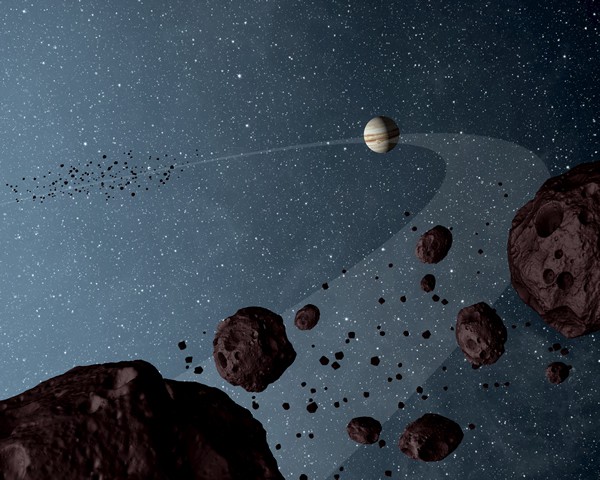Scientists using data from NASA’s Wide-field Infrared Survey Explorer, or WISE, have uncovered new clues in the ongoing mystery of the Jovian Trojans – asteroids that orbit the sun on the same path as Jupiter. Like racehorses, the asteroids travel in packs, with one group leading the way in front of the gas giant, and a second group trailing behind.
The results are illustrated in this artist’s concept, showing both the leading and trailing packs of Trojans in orbit with Jupiter.
The observations are the first to offer a detailed look at the Trojans’ colors: both the leading and trailing packs are made up of predominantly dark, reddish rocks with a matte, non-reflecting surface. What’s more, the data verify the previous suspicion that the leading pack of Trojans outnumbers the trailing bunch.
The new results offer clues in the puzzle of the asteroids’ origins, said PSI Research Scientist Tommy Grav, a WISE mission scientist.
“Jupiter and Saturn are in calm, stable orbits today, but in their past, they rumbled around and disrupted any asteroids that were in orbit with these planets,” said Grav, a member of the NEOWISE team, the asteroid-hunting portion of the WISE mission. “Later, Jupiter re-captured the Trojan asteroids, but we don’t know where they came from. Our results suggest they may have been captured locally. If so, that’s exciting because it means these asteroids could be made of primordial material from this particular part of the solar system, something we don’t know much about.”

